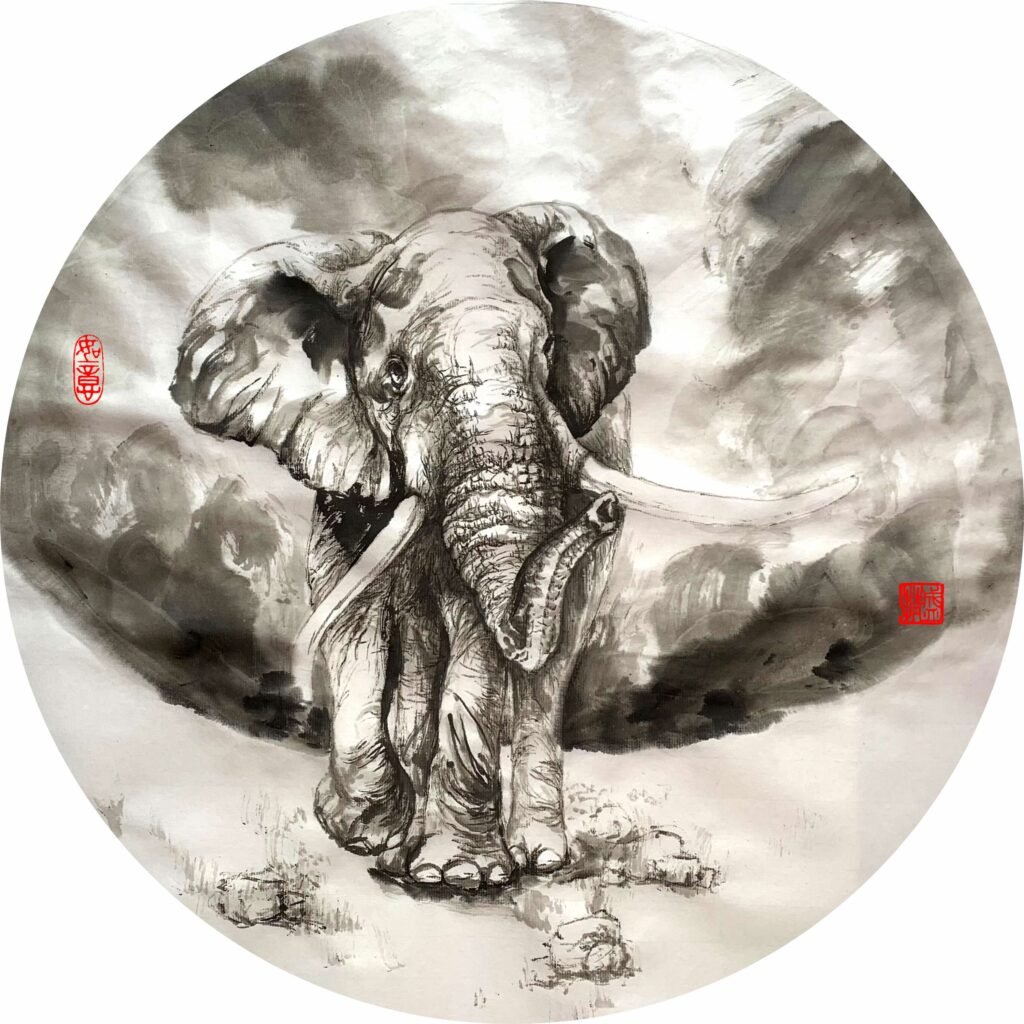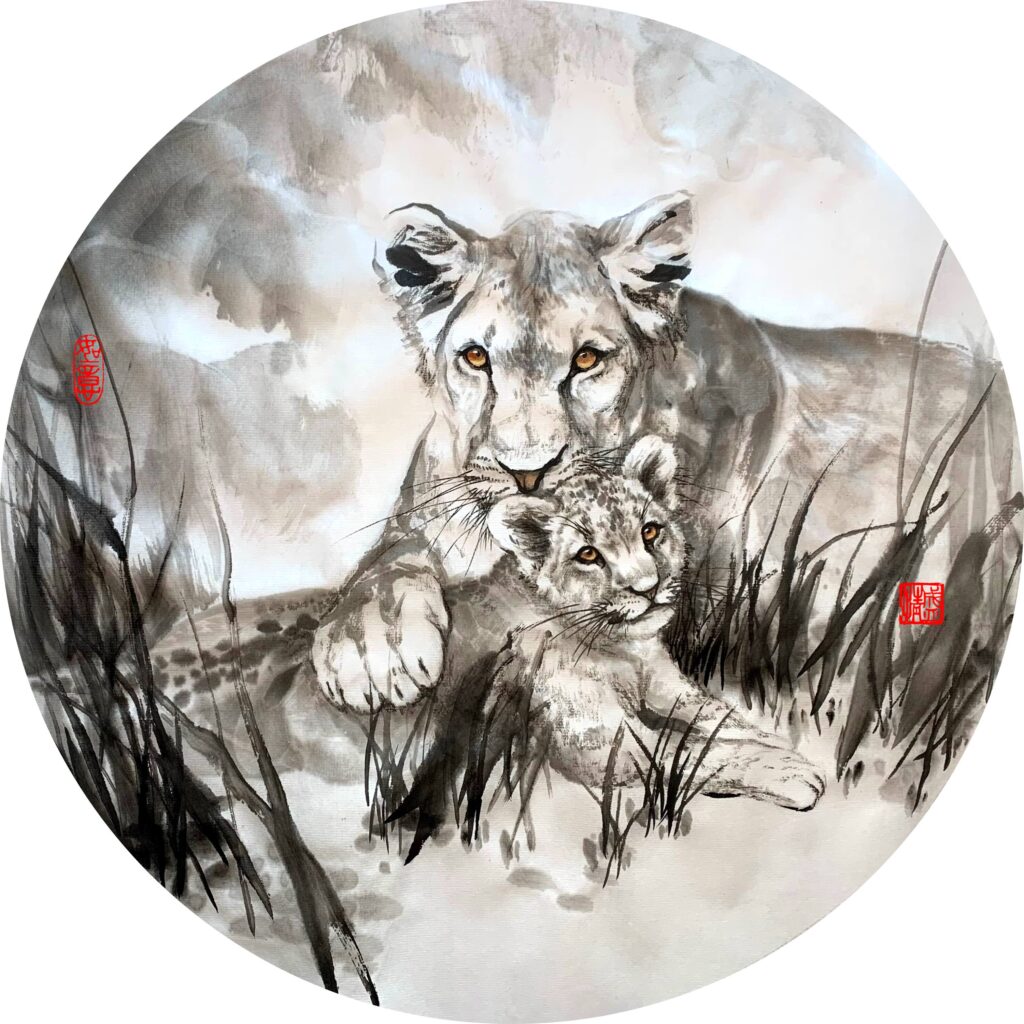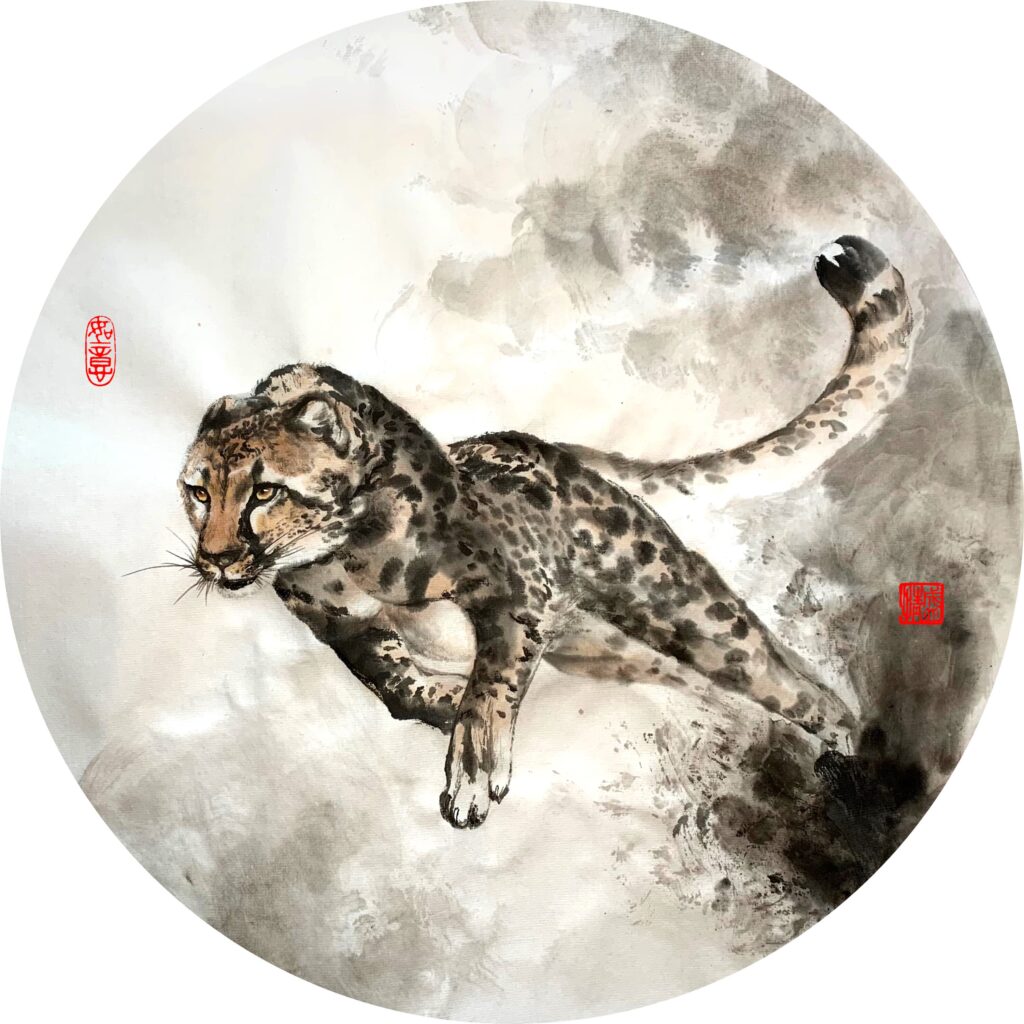In the Eastern society we have the Four Gentlemen Plants, and we discussed the bamboo last time. Another one of the “gentlemen” would be the chrysanthemum flower, which is exactly in season right now! Yesterday was the Double Ninth Festival, so our discussion about these flowers will start with the number “9”.

The number “9” is a Yang number according to the Book of Change, which is also the largest digit. Sky can even be referred to as “9”. Yesterday according to the lunar calendar, was the ninth day of the ninth month, which is where the name Double Ninth came from. So when this special Yang number doubles (the name in Chinese is in fact, double Yang), there must be celebrations, because we have encountered an auspicious day!
But what does the chrysanthemum flower have to do with the number “9” or this festival? It is because around this festival there are plenty of activities, and amongst them, the appreciation of the chrysanthemum flowers. These flowers bloom right around the time of the Double Ninth Festival, and the chrysanthemum flowers have always represented longevity (this festival also involves the respect toward the elderlies or ancestors), then naturally a connection was created.

Around this time of the year, various parks would have chrysanthemum flower exhibitions, displaying hundreds of kinds of these colorful flowers. In fact the chrysanthemum cultivation has existed for about 3,000 years in China already, and it was at first planted for its medicinal use. Starting around the Tang Dynasty these pretty flowers also attracted more attention and started to be appreciated for their beauty. It was also around this time that the Japanese chrysanthemum culture was developed. The Song Dynasty recorded many detailed variations of these flowers, and it was also around this time that the flower exhibitions became popular. As the technology develops, more and more styles of these flowers appeared, and in the Qing Dynasty there were already 233 variations of these flowers! It was only toward the end of the Ming Dynasty (mid 17th Century) that the Dutch merchants brought these flowers into Europe, where they started to be enjoyed worldwide.
Along with the appreciation of the flowers, people also drink chrysanthemum wine. The making of such wine already started in the Han Dynasty, and lasted until today. Obviously made for its medicinal purpose, this drink has a tint of bitterness, which according to the traditional medicine, usually clears the mind and with the chrysanthemum, it also brightens the eyes. Eventually drinking this wine became an auspicious tradition, indicating a long and happy life. In the painting above, the artist Qi Bai Shi at the age of 91 described, in his rather distinctive style, the association of health, longevity and these chrysanthemum flower and flower wine. The title also says the same meaning: chrysanthemum wine for a happy long life.

The chrysanthemum flowers also carry the spirit of bravery, especially only when all the other flowers have waned, these brave souls would bloom. This character in particular is what the literati scholars admire, the spirit of a true gentleman. The attraction toward chrysanthemum flowers also has to do with the hermit quality they represent, as the scholar and social elites who aspire to be chrysanthemum generally preferred the peace and quiet outside of the messy society. The Jin Dynasty poet Tao Yuan Ming (365-427) famously demonstrated his grand love for these flowers, as he described his desired life. Below is a wonderful translation of one of the versions of Tao’s poem, translated by Yang Xian Yi and Dai Nai Die, and here I share with you:
Drinking (V)
Within the world of men I make my home,
Yet din of horse and carriage there is none;
You ask me how this quiet is achieved —
With thoughts remote the place appears alone.
While picking asters ‘neath the Eastern fence
My gaze upon the Southern mountain rests;
The mountain views are good by day or night,
The birds come flying homeward to their nests.
A truth in this reflection lies concealed,
But I forget how it may be revealed.
Our Courses
-
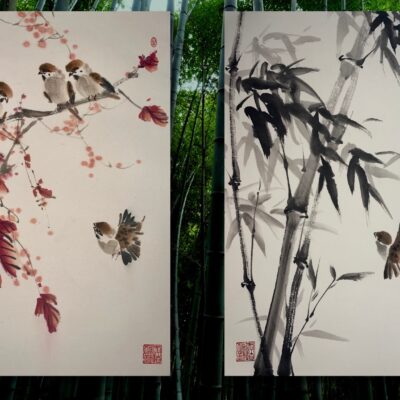 Bamboo & Sparrow Painting Course
Bamboo & Sparrow Painting Course -
 Cat Painting Course
Cat Painting Course -
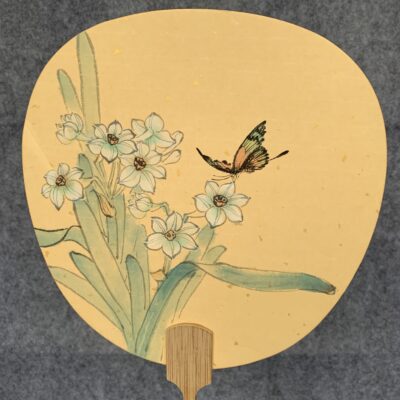 Daffodil & Butterfly Fan Painting Course
Daffodil & Butterfly Fan Painting Course -
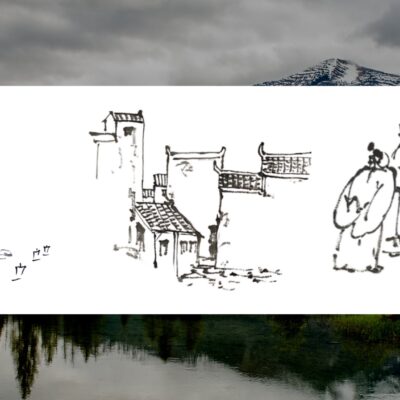 Landscape Scenery Painting Course
Landscape Scenery Painting Course -
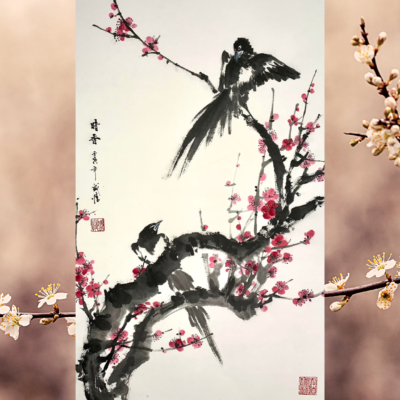 Magpie & Plum Blossom Freehand Painting
Magpie & Plum Blossom Freehand Painting -
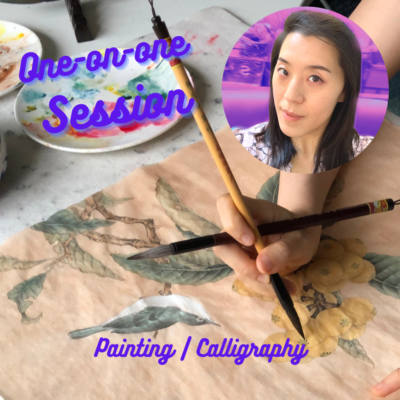 One-on-one Sessions
One-on-one Sessions -
 Panda Ninja Ink Art Club
Panda Ninja Ink Art Club -
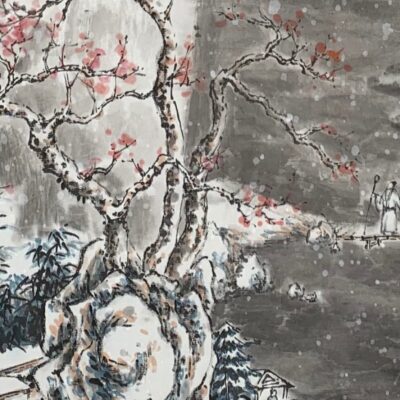 Snow Landscape Painting Course
Snow Landscape Painting Course -
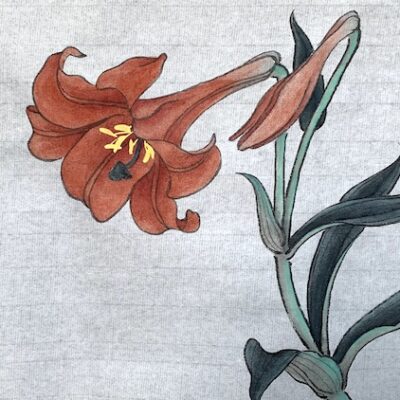 Gonngbi Painting (1) – Introduction & Lily Flower
Gonngbi Painting (1) – Introduction & Lily Flower -
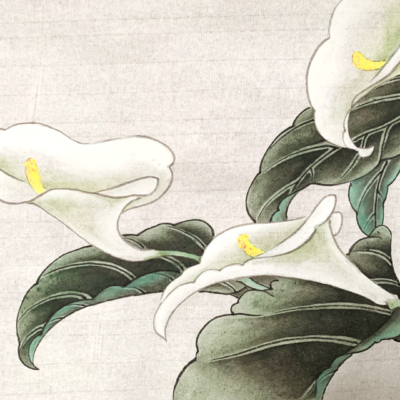 Gongbi Painting (2) – Calla Lily
Gongbi Painting (2) – Calla Lily -
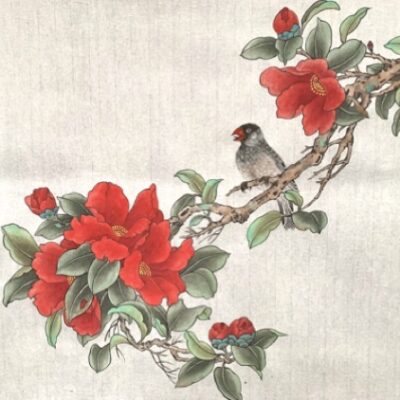 Gongbi Painting (5) – Camellia Flower & Bird
Gongbi Painting (5) – Camellia Flower & Bird -
 Fish Painting Course
Fish Painting Course -
 Grapes and Bees Painting Course
Grapes and Bees Painting Course -
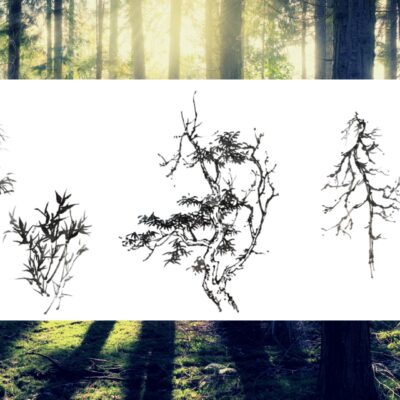 Landscape Tree Painting Course
Landscape Tree Painting Course -
 Chicken Painting Course
Chicken Painting Course -
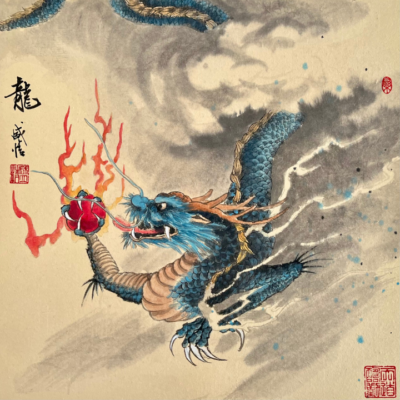 Dragon Painting & Calligraphy Course
Dragon Painting & Calligraphy Course
Buy Artworks | Learn Brush Painting | Learn Chinese Calligraphy
